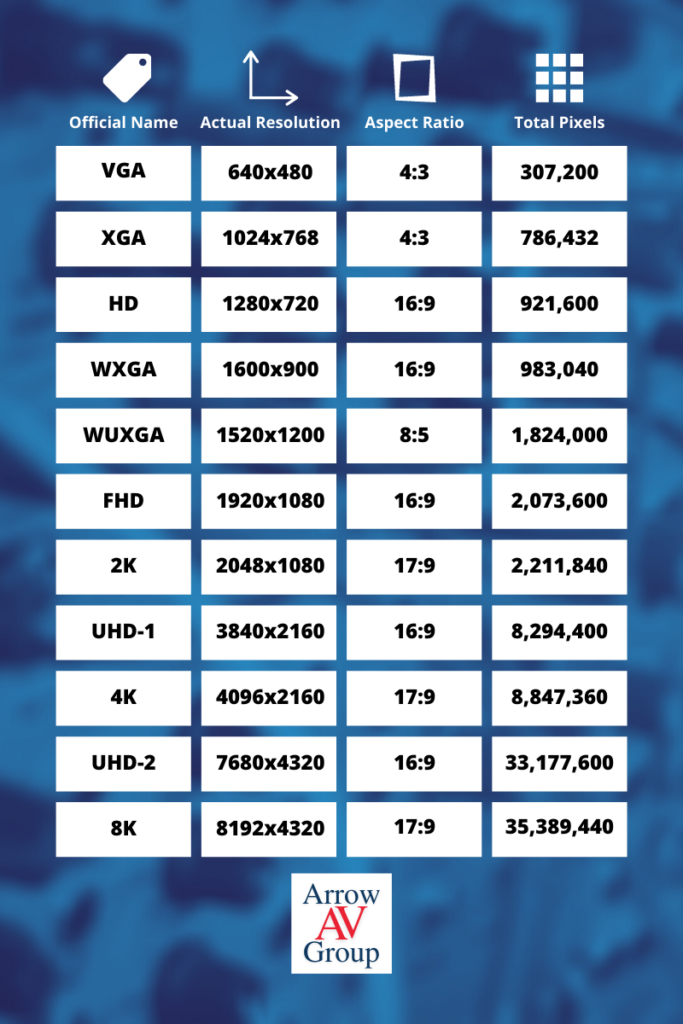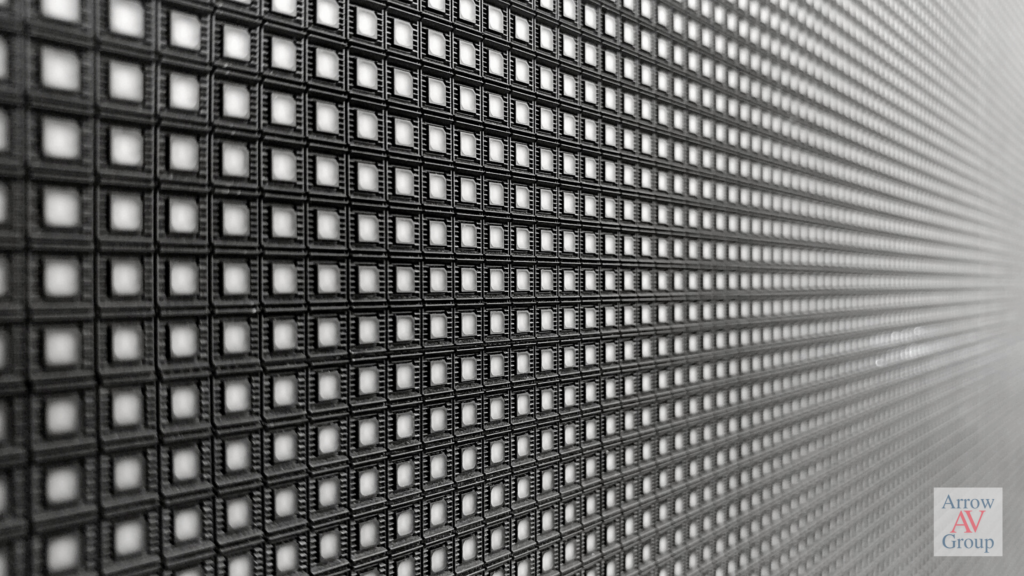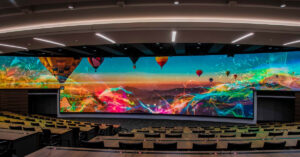
Video Building Block: Resolution
Published October 9, 2020
Is it already the New Year? Nope, we’re still a few months away from that but this week, we discuss the most talked about building block of video: resolution.
What exactly is resolution?
Resolution is the size of the canvas for the video. Technically, it is the number of pixels wide by number of pixels high. For easier communication, resolution for a display or camera is shortened to either just the height, width, or the standardized name. See table below for examples.
We can also infer the aspect ratio from the resolution. The aspect ratio tells us what shape the canvas is. Standard aspect ratios are horizontal rectangle (16:9) and slightly larger horizontal rectangle (16:10). However, many people these days are bored with the plain, wide screen rectangle. Thanks to the advent of smart phones, modular LED walls, and projection mapping, aspect ratio has become less standardized and more of a building block for creating unique and eye catching video canvases.
This is an extreme example but look at this installation in Vegas from our friends over at Watchfire. The LED canopy is almost a quarter mile LONG!
What are the most common resolutions?
Here! Have a chart. It’s much easier.

Do we actually need more resolution?
This question has been in debate for quite a while. More detail is always better right? Like most answers from technical folk, it depends.
For the average consumer, no, more resolution is not always better. Higher resolution means you can be closer to a screen without noticing the individual pixels. According to Carlton Bale, if your home theater was equipped with a 4K 84″ screen, you’d have to be 5.5 ft away to reap the full benefits of 4K. How often are you mere feet from your screen to watch the latest blockbuster or sports game? Rarely? Never at all? Don’t let the marketing fluff get to you. You’re more likely to see a higher quality image on a moderate resolution display with better contrast, color gamut, and refresh rate.
For professionals, however, recording and monitoring at the highest affordable resolution is the best option. The reason being you can downsize high resolution but you cannot upsize low resolution without visual artifacts. Here are a few examples where higher resolution is a requirement.
- Broadcasters and filmmakers capturing for every medium from theater to smartphone
- Content creators wanting to digitally zoom without losing clarity
- Educational/corporate environment utilizing the digital canvas philosophy
- Photographers shooting for both digital and print mediums
- Digital artists creating hyper realistic drawing or 3D graphics
- Doctors analyzing x-rays and charts, where a blurry pixel could mean the difference between a patient going home and a long term stay.
Where do you stand on the resolution debate? Can you tell the difference between 4K and 1080 at a glance? Send us a message or find us social to let us know your side!
Sources & Further Reading:
- https://en.wikipedia.org/wiki/List_of_common_resolutions
- https://www.scientificamerican.com/article/pogue-why-hi-res-isnt-always-better/
- http://carltonbale.com/does-4k-resolution-matter/
- https://guides.lib.umich.edu/c.php?g=282942&p=1885350#:~:text=Higher%20resolutions%20mean%20that%20there,visible%20like%20the%20image%20below.
- https://www.space.com/vera-rubin-observatory-record-breaking-first-photos.html
Want to get these articles a week in advance with extra deals and news? Sign up for our weekly newsletter, the Archer’s Quiver, and we’ll send you a FREE AV guide.
Get Expert AV Assistance
Latest Blogs
About Arrow AV Group
We are a premiere audiovisual integration firm serving corporate, government, healthcare, house of worship, and education markets with easy-to-use solutions that drive success. Family-owned and operated from Appleton, WI for over 35 years.





